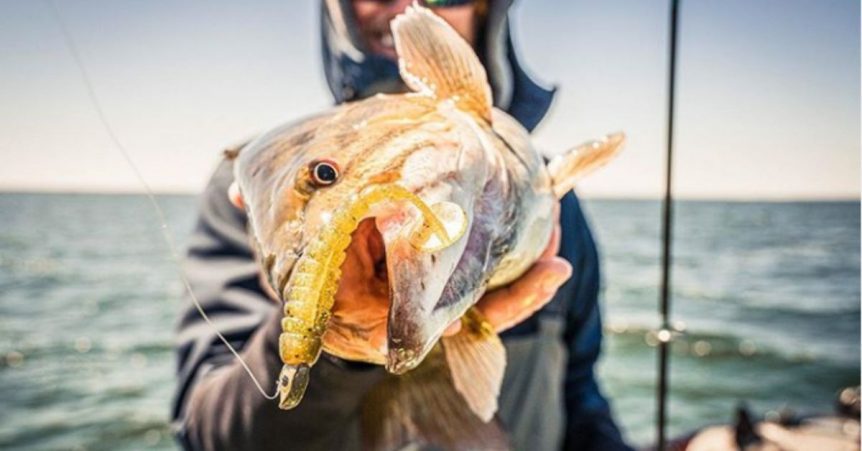[print_link]
Paying attention to nature signs can turn a dismal bass fishing outing into a productive trip. Picking up clues from various terrestrial or aquatic sources can help you determine what the bass are doing on your favorite waters.
Awareness of water and weather conditions and what your lure is doing are keys to bass fishing but awareness of what is going on in the surrounding outdoors can also be a super key.
When fishing in an area you should be aware of whether it is “live” or “dead” water. Telltale signs of dead water include a lack of shad, minnows, and sunfish in the shallows, and the absence of birds hanging around the shoreline. Live water will have plenty of baitfish and bird activity in the area.
Here are some signs from Mother Nature that will help you catch more bass:
Using Natural Signs To Pattern Bass


The touring bass pros have noticed all wildlife tends to get active around the major feeding periods. They have observed countless times when they are catching fish that land animals such as turkeys have been gobbling or a lot of squirrels have been running around on the bank.
A nature reading tip from the late Bassmaster Classic Champion Guido Hibdon helped salvage one of my fishing trips a few years ago. After more than five hours of pitching and casting a variety of lures resulting in only a couple of bites, it seemed a strong possibility that my fishing buddy and I were going to be blanked on our home waters.
As we worked down an undeveloped bank, I noticed a flock of turkeys feeding at the edge of the woods and squirrels rummaging around on the ground. As we passed this wildlife activity, my buddy suggested we should take our licks and go home. Seeing those feeding turkeys and squirrels made me recall when Hibdon once told me he could tell bass were going to start biting whenever he saw deer, squirrels and other wildlife get active. So I told my buddy about Hibdon’s theory and we decided to try one more spot. When he moved to a row of docks, we discovered the bass had turned on as my buddy caught a keeper on the first dock and missed a 5-pounder at the next boathouse. In the next hour and a half we boated eight keepers with our best five fish weighing about 17 pounds.
Checking out dogwood trees in the spring can help you figure out patterns for bass. If the dogwoods are blooming then bass are probably going to be on spawning beds. So blooming dogwoods are a good indicator that bass will be shallow on your favorite fishery.
Keep An Eye On The Birds In The Sky


You can also pay close attention to birds for clues on the mood and location of bass. The pros claim bass seem to bite better when birds are singing and owls are hooting.
Terns and gulls feeding and ducks flying are also good indications that bass are biting. If you notice a lot of ducks flying and circling that is a great time to catch bass so if you are fishing a spot and not catching anything that usually indicates bass are not there. This aerial activity is a signal to speed up your presentation and go into a search mode to find active fish elsewhere.
Cormorants are always good to look for when you are hunting for bass. It doesn’t necessarily have to be on that exact spot where you see them, but if you see a lot of cormorants in a bay or in a certain part of the lake that is where you will find a lot of bass. Cormorants have to fish for a living, so they know where the shad are and they eat a lot of gizzard shad that bass also eat.
During the postspawn, if you start seeing blackbirds on riprap rocks it is a sure sign that the shad are starting to spawn. You can go to the riprap then and catch bass gorging on spawning shad then.
Natural Clues Living Below The Surface


If you see any of the bass’ food (shad, minnows and bream) has moved shallow in the morning or afternoon you can usually catch a few bass shallow no matter what time of the year it is.
Croaking frogs are also a good indicator of “live” water. When you pull into a cove and hear the frogs croaking it is a good sign that the area holds active bass.
Scanning the water’s surface for turtles will help you find brush piles that are usually bass magnets. The turtles usually rise from the brush piles and then dive back down into the cover to feed. Some of the pros have said they rely on rising turtles to help them find underwater logs and brush in a hurry when fishing vast flats on reservoirs. Whenever I have seen a turtle on the surface I have thrown my lure close to the terrapin and have felt my lure bump into brush on many occasions.
Concentrating on your line will help you detect more strikes, but there are times when nature watching becomes a key to catching more bass.

